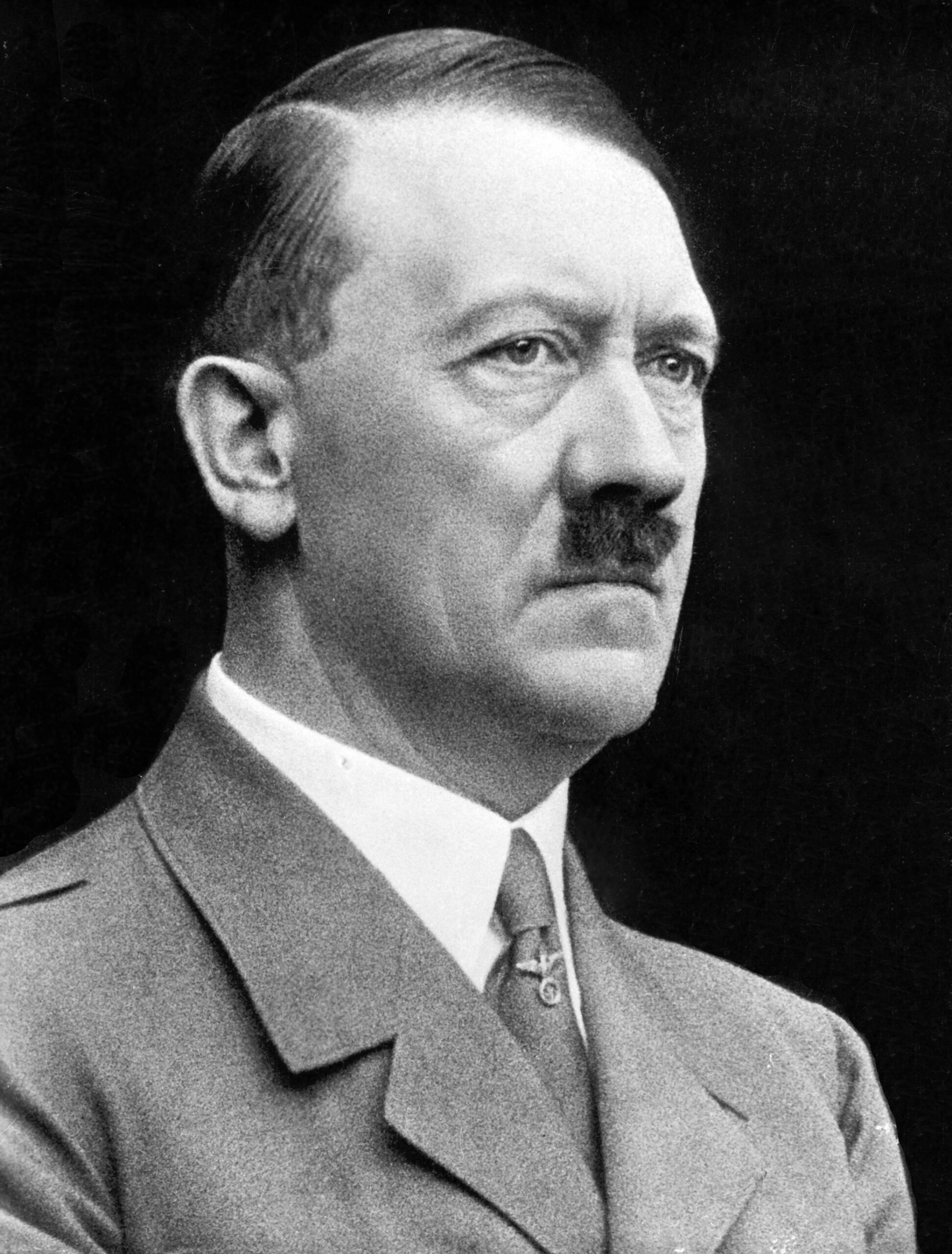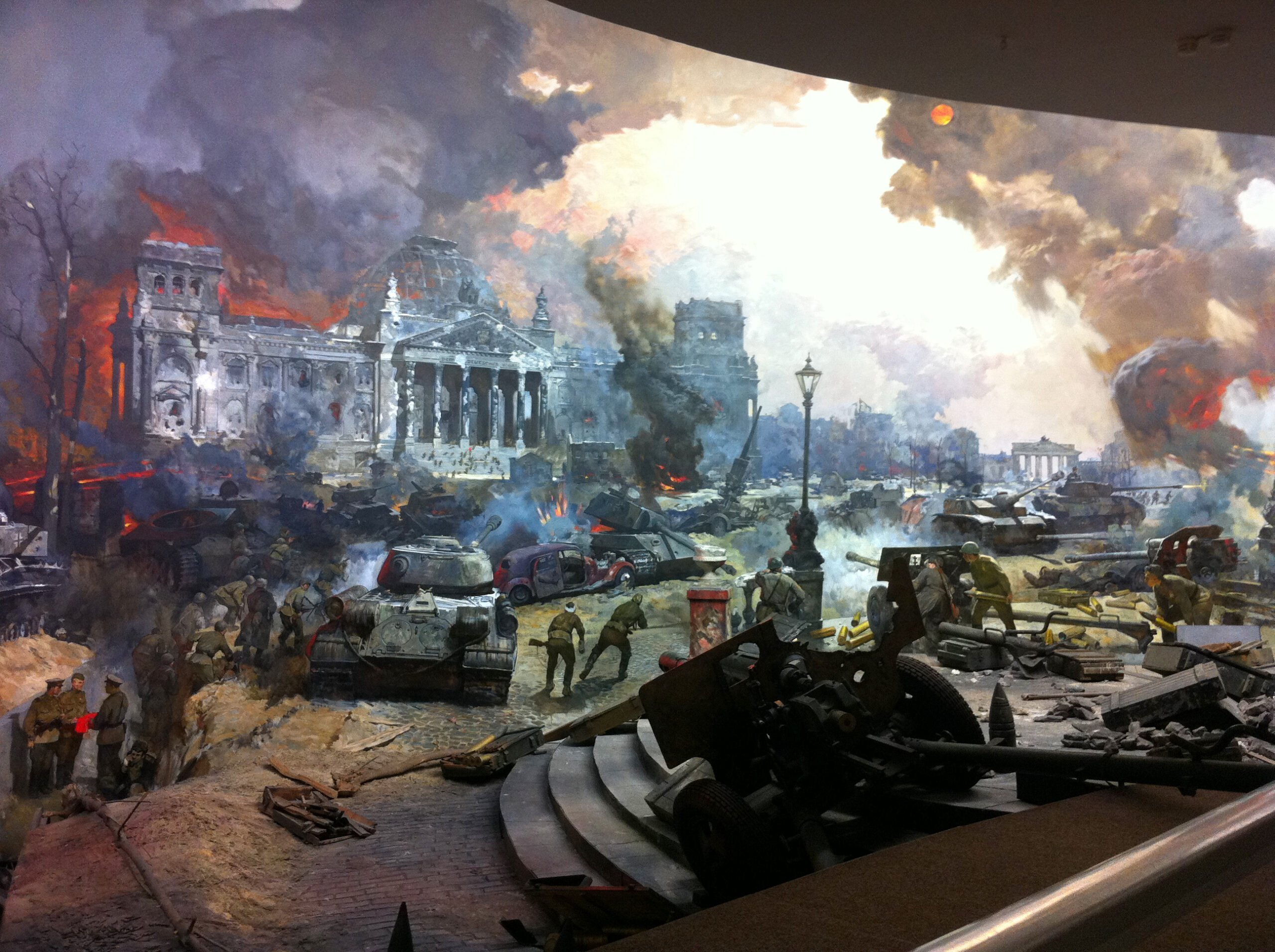Battle of Berlin
The Battle of Berlin was the final major offensive of World War II in Europe and brought the reign of Nazi Germany to an end. In just 16 days, a 2.5-million-strong Soviet Army made a relentless march across the German capital and surrounding areas, taking nearly half a million Nazi prisoners. As the city fell, dictator Adolf Hitler and several of his highest-ranking officials committed suicide to avoid facing up to their countless crimes.
In the winter of 1941-42, when the German army was driven back from the gates of Moscow, the Soviet troops who had survived the first disastrous months of the German invasion brought with them Soviet cameramen, whose footage gave the world its first glimpse at what the Germans had committed in Russia. The film they produced, known in the West as ‘Moscow Strikes Back’, was described by the New York Times as follows:
“The villages are not villages but charred honeycombs of little low walls that once were houses, schools or even cathedrals. But infinitely more terrible are the charnel heaps of twisted grotesques that no longer resemble human beings, the naked and slaughtered children stretched out in ghastly rows, the youths dangling limply in the cold from gallows that were rickety, but strong enough. Among them wander the living mothers, their faces set in friezes of grief, and sometimes a Red Army soldier gazing on the broken bodies with a silence like flame.”

Over the next three years of fighting, any soldier fortunate enough to have survived that ordeal witnessed scenes like that time and time again. In April 1945, those soldiers arrived at the gates of Berlin.
1945
By the beginning of that year, Western and Soviet armies were converging on Germany. For the past three and a half years, though, the main brunt of the fighting had been borne by the Soviet Army. While the exact figures are not known, it is estimated that between eight and fourteen million Soviet soldiers were killed by the end of the war. That figure does not count the many millions of dead Soviet civilians.
In February 1945, the Allied leaders met at Yalta to discuss what would happen with Germany postwar, and they agreed that Germany would be divided into four occupation zones – British, American, French and Soviet – and that Berlin, the capital, would be carved up into four sectors. Despite this, and as the victorious outcome of the war began to appear more and more certain, mistrust between the Allies had begun to grow, and military leaders on both sides feared that words on paper would mean little without boots on the ground to back them up.
Josef Stalin organised a general Soviet offensive to drive as far into Germany as possible, and played upon the rivalry between his two top commanders, Georgy Zhukov and Ivan Konev, by encouraging them to compete with one another to win the glory of capturing Berlin.
In the West, Winston Churchill reportedly urged General Dwight Eisenhower to attempt to capture the city. Eisenhower eventually decided against such an operation. He did not wish to expend Allied lives capturing more territory which the Allies had already agreed at Yalta to hand over to the Soviets. He feared friendly fire between Western and Soviet forces. As the Soviet forces advanced on Berlin, Eisenhower ordered the Western armies to halt on the Elbe and Mulde rivers, and focus on mopping up the remaining German forces on their northern and southern flanks.
The German army in 1945 was by now a shadow of its former self, reduced in part to old men and boys. Nevertheless, they fought on, each for his own reasons. What can be said with certainty is that almost everyone was afraid of the Russians; afraid of what would happen to them in Russian captivity, and afraid of what would happen to their families once the Russians were given the opportunity for revenge. Those veterans remaining from the campaigns in the East who had seen, and perhaps taken part in the atrocities there, had little reason to doubt the rumours of impending Soviet vengeance.
The Red Army’s plan of action

The Red Army’s operations took the shape of two great offensive lunges. The first was the Vistula – Oder offensive, which took place from January 12 to February 2. Zhukov advanced in the centre, while Konev advanced in the south. Following this, Soviet forces moved rapidly across Poland until they halted along the lines of the Oder and Niesse rivers, with bridgeheads established across the Oder some 70km east of Berlin. Although the city was undefended at this time, Zhukov gave the order to halt, as his northern flank was threatened by the German Second Army. Clearing out these forces was accomplished between February 24 and April 4, with the Second Army being surrounded and mostly destroyed in Danzig/Gdansk.
With his northern flank secure, Zhukov could now prepare for the final frontal assault towards Berlin. However, the delay had given the Germans time to rebuild their defences along the Oder River.
On March 20, German General Gotthard Heinrich was appointed commander of them. He assumed that the main Soviet thrust would be across the river along the axis of the main east-west Autobahn. Being vastly outnumbered, he planned an in depth defence, deploying only light forces along the riverbanks while the main defensive position was established on the Seelow heights, overlooking the road 17km to the west of the river. German engineers turned the Oder’s flood plain into marsh by breaching a reservoir, while on the heights, they constructed three defensive belts with lines of trenches, bunkers, anti-tank guns and ditches.
As expected, Zhukov concentrated his attack on the section of the line opposite the Seelow heights, but the overall redeployment left gaps in the Soviet lines, allowing what little remained of the German 2nd army to escape to the west. The Red Army forces had 2.5 million men, 6,000 tanks, and over 7,500 aircraft between them. They were opposed by about 760,000 Germans of Army Group Vistula in the north and Army Group Centre in the south, with about 1,500 tanks and 2,200 aircraft between them.
Berlin Strategic Offensive
The Berlin Strategic Offensive began on April 16, with a massive artillery barrage against the German positions. Despite their advantage in firepower and numbers, advancing proved difficult for Zhukov’s 1st and Rokossovsky’s 2nd Belorussian fronts in the marshlands created by the German engineers. Frustrated and behind schedule, Zhukov threw in his reserves, committing to massed human wave assaults which led to heavy Soviet casualties.
Meanwhile, Konev’s 1st Ukrainian Front had made progress in the south against weaker opposition by Army Group Centre, and following the capture of Forst on April 18, the remaining elements of the German 9th and 4th Panzer armies defending the Seelow heights were forced to withdraw or risk being outflanked from the south; but their withdrawal left the way open for Zhukov, who now moved to trap the German forces in a pincer movement with Konev’s Front.

As for the Western Allies, they had halted on the Elbe River. Thanks to captured documents, the Germans knew that they were unlikely to advance any further in the immediate future. Hitler ordered General Walther Wenck’s 12th Army, currently fighting the Americans, to head east to link up with the 9th Army as it retreated west, after which the two armies together would relieve Berlin. However, by April 23, the 9th army had been completely cut off, and by the April 24, the encirclement of Berlin was complete. Wenck chose to force open a corridor which would allow the breakout of the 9th army and the evacuation of civilians from the city, then he would make for the Western lines with as many civilians as they could bring with them and surrender to the Americans.
On April 22, Hitler had ordered General Helmuth Wielding to be shot for allegedly retreating from the enemy. As it turned out, Wielding had not in fact retreated, and when he showed up in the Fuhrerbunker to tell the Fuhrer as much, Hitler was apparently impressed, and the next day he appointed Wielding as the commander of the Berlin defence zone. Wielding had under his command a motley of approximately 45,000 Wehrmacht and Waffen SS troops, 40,000 Volkssturm militia and various other units formed from the Hitlerjugend and local police. They were surrounded by around 1.5 million Soviet troops.
The result was nine days of brutal house-to-house fighting during which the German forces, though massively outnumbered and also outgunned, still managed to inflict heavy casualties on the Soviet attackers. The two Soviet Fronts attacking Berlin, having collaborated to achieve the encirclement, promptly resumed their competition with renewed vigour, each fighting to reach the city centre before the other.
The end of Hitler
Having chosen to remain in the city rather than flee, Hitler committed suicide on April 30. General Wielding ordered the remainder of the garrison to attempt to break out towards the Western front lines; a handful would successfully surrender to the Allies, while the majority were killed or captured by the Soviets. On May 2, General Wielding ordered those units who remained in the city to surrender, and he surrendered to Soviet General Vassily Chuikov in person and in writing that same morning. Chuikov’s 8th Guards Army was part of Zhukov’s 1st Belorussian Front.
As the Soviet army entered the ruined city, the civilian population was subjected to a wave of rape, pillage and murder, which continued for several weeks. While the exact figures are far from certain, it is believed that civilian deaths exceeded 125,000, though the extent to which these figures were attributable to what would today be called ‘collateral damage’ rather than simple murder, cannot be determined. Additionally, approximately 100,000 women were raped in Berlin, out of approximately two million raped in the entire country during the final six months of the war.
It should be noted that under the direction of Zhukov, efforts were made both during and after the battle to ensure that the civilian population of the city was provided for and that vital services were restored. German military deaths in the course of the whole operation totalled around 100,000, while approximately 80,000 Soviets were killed and an additional 280,000 wounded.
Germany surrenders
The end of the Battle of Berlin was shortly followed by Germany’s unconditional surrender. On May 6 at Reims, Alfred Jodl offered to surrender all forces fighting the Western Allies, but Eisenhower told him it must be ALL forces on ALL fronts, or the Western Allies would close their lines and all surrendering would be done to the Soviets.
Admiral Karl Dönitz, leader of Germany after Hitler’s death, authorised that and just after midnight Jodl signed it. The next day, German representatives went to Berlin and signed another surrender in front of Zhukov, whose army had won the “race” to Berlin.
Ironically, however, Konev would have the last laugh: the glory of Zhukov’s many victories turned out to be too much for Stalin’s taste, and within a year he had been banished from Moscow, first to command the Odessa district and then the Urals district, though he would be rehabilitated after the death of Stalin. Konev, meanwhile, enjoyed a long, successful, and uninterrupted career.
Despite having occupied more of Germany than their Yalta allocations, the Western Allies chose to honour the agreement and withdraw to the agreed upon boundaries, and in turn, the Soviet Union would allow them to occupy their assigned portions of Berlin.
The Battle of Berlin heavily inspired our song ‘Attero Dominatus‘. Take a look at the lyrics we wrote here.
If you prefer a visual interpretation of this story, watch our Sabaton History episode, Attero Dominatus – The Battle of Berlin:





















